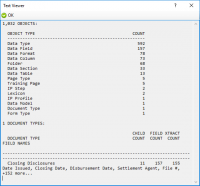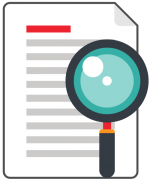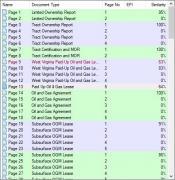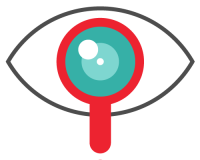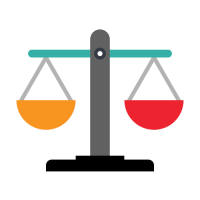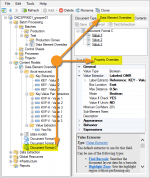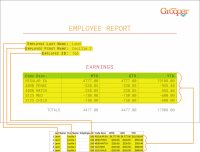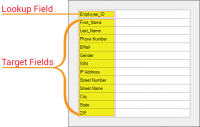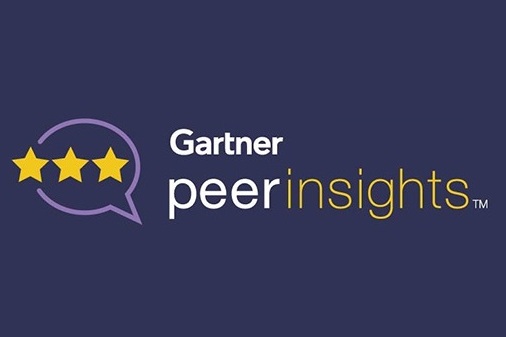Main Page: Difference between revisions
Dgreenwood (talk | contribs) No edit summary |
Dgreenwood (talk | contribs) No edit summary |
||
| Line 21: | Line 21: | ||
|-style="background-color:#d8f3f1" valign="top" | |-style="background-color:#d8f3f1" valign="top" | ||
| | | | ||
[[File:Separation-about.png|right|350px]] | |||
<blockquote style="font-size:14pt"> | <blockquote style="font-size:14pt"> | ||
[[Separation]] | |||
</blockquote> | </blockquote> | ||
'' | Separation, in Grooper, is the process of turning loose pages into documents, by determining points in a '''Batch''' at which '''Batch Folders''' are created and subsequent '''Batch Pages''' are placed inside. | ||
Pages are organized into document folders during the '''[[Separate]]''' activity. There are a variety of methods to separate pages into documents during this activity, including (but not limited to) the use of printed control sheets, defined page lengths, and extractible text content. The specific separation method is determined by the '''''[[Separation Provider]]''''' and its configuration used during the '''Separate''' activity. You may also save and re-use a '''''Separation Provider's''''' configuration settings by creating a '''[[Separation Profile]]'''. | |||
| | | | ||
The earliest examples of OCR (Optical Character Recognition) can be traced back to the 1870s? Early OCR devices were actually invented to aid the blind. This included "text-to-speech" devices that would scan black print and produce sounds a blind person could interpret, as well as "text-to-tactile" machines which would convert luminous sensations into tactile sensations. Machines such as these would allow a blind person to read printed text not yet converted to Braille. | The earliest examples of OCR (Optical Character Recognition) can be traced back to the 1870s? Early OCR devices were actually invented to aid the blind. This included "text-to-speech" devices that would scan black print and produce sounds a blind person could interpret, as well as "text-to-tactile" machines which would convert luminous sensations into tactile sensations. Machines such as these would allow a blind person to read printed text not yet converted to Braille. | ||
Revision as of 11:46, 15 December 2020
| Getting Started | |||
|
Grooper was built from the ground up by BIS, a company with 35 years of continuous experience developing and delivering new technology. Grooper is an intelligent document processing and digital data integration solution that empowers organizations to extract meaningful information from paper/electronic documents and other forms of unstructured data. The platform combines patented and sophisticated image processing, capture technology, machine learning, natural language processing, and optical character recognition to enrich and embed human comprehension into data. By tackling tough challenges that other systems cannot resolve, Grooper has become the foundation for many industry-first solutions in healthcare, financial services, oil and gas, education, and government. |
Getting Started | ||
| Install and Setup | |||
| 2.90 Reference Documentation | |||
| Featured Articles | Did you know? |
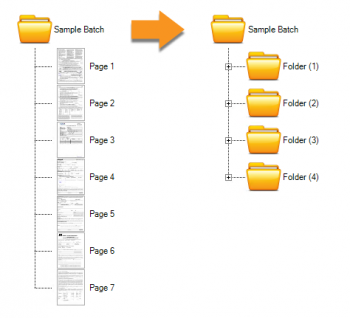 Separation, in Grooper, is the process of turning loose pages into documents, by determining points in a Batch at which Batch Folders are created and subsequent Batch Pages are placed inside. Pages are organized into document folders during the Separate activity. There are a variety of methods to separate pages into documents during this activity, including (but not limited to) the use of printed control sheets, defined page lengths, and extractible text content. The specific separation method is determined by the Separation Provider and its configuration used during the Separate activity. You may also save and re-use a Separation Provider's configuration settings by creating a Separation Profile. |
The earliest examples of OCR (Optical Character Recognition) can be traced back to the 1870s? Early OCR devices were actually invented to aid the blind. This included "text-to-speech" devices that would scan black print and produce sounds a blind person could interpret, as well as "text-to-tactile" machines which would convert luminous sensations into tactile sensations. Machines such as these would allow a blind person to read printed text not yet converted to Braille. The first business to install an OCR reader was the magazine Reader's Digest in 1954. The company used it to convert typewritten sales reports into machine readable punch cards. It would not be until 1974 that OCR starts to form as we imagine it now with Ray Kurzweil's development of the first "omni-font" OCR software, capable of reading text of virtually any font. |
| New in 2.9 | Featured Use Case | ||||||||||||||||||||||||||||||||||||
|

Discover how they:
| ||||||||||||||||||||||||||||||||||||
Feedback
| Feedback | |
|
We value your feedback! | |
| Other Resources | |||
|
|||

